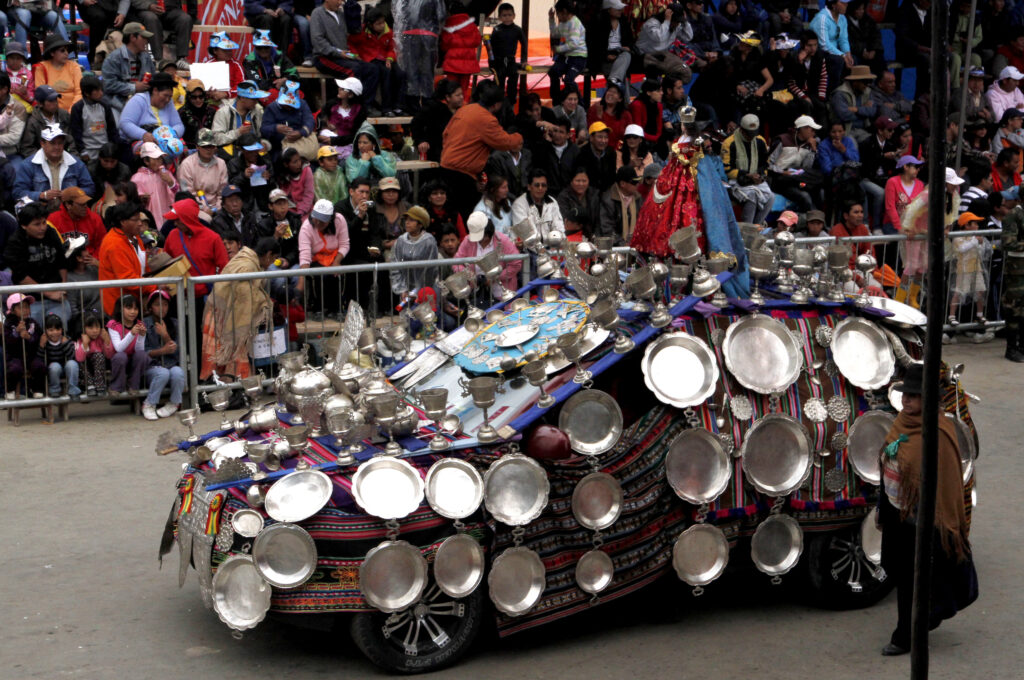
This annual carnival takes place during February in the city of Oruro, which is known as the folklore capital of Bolivia, situated about 226 kilometres from the country’s capital city, La Paz. It is the most popular festive event in Bolivia and one of the greatest festivals in the world, with more than 2,000 years of history and heritage. In 2001, an international jury of public figures, convened by the Organization of the United Nations Educational, Scientific and Cultural Organization (UNESCO), declared the Oruro Carnival as a “Masterpiece of Oral and Intangible Heritage of Humanity.”

There is a very important local legend associated with the city of Oruro,
according to which, the Urus people who lived in the area were tempted by the god Wari to follow him, but they resisted. In revenge, Wari decided to punish them by sending a giant snake, but the Ñusta (indigenous priestess) cut it in half and turned the pieces into stones. In response, Wari sent a giant frog, which was also turned into a stone by the Ñusta. Wari then he sent a giant lizard and the Ñusta cut off its head and turned the pieces into stones again. However, when Wari sent an army of giant ants, the Nusta this time turned them into sands.
The carnival is the festival of the Urus people. ‘Its ceremonies stem from Andean customs, the ancient invocations centering around Pachamama (Mother Earth, transformed into the Virgin Mary due to Christian syncretism) and Tio Supay (Uncle God of the Mountains,
transformed into the Devil). The native ceremonies were stopped in the 17th century by the Spanish, who were ruling the territory of Upper Peru at the time. However, the Urus continued to observe the festival in the form of a Catholic ritual on Candlemas, in the first week of each February. Christian icons were used to conceal portrayals of Andean gods, and the Christian saints represented other Andean minor divinities. The ceremony begins forty days before Easter.
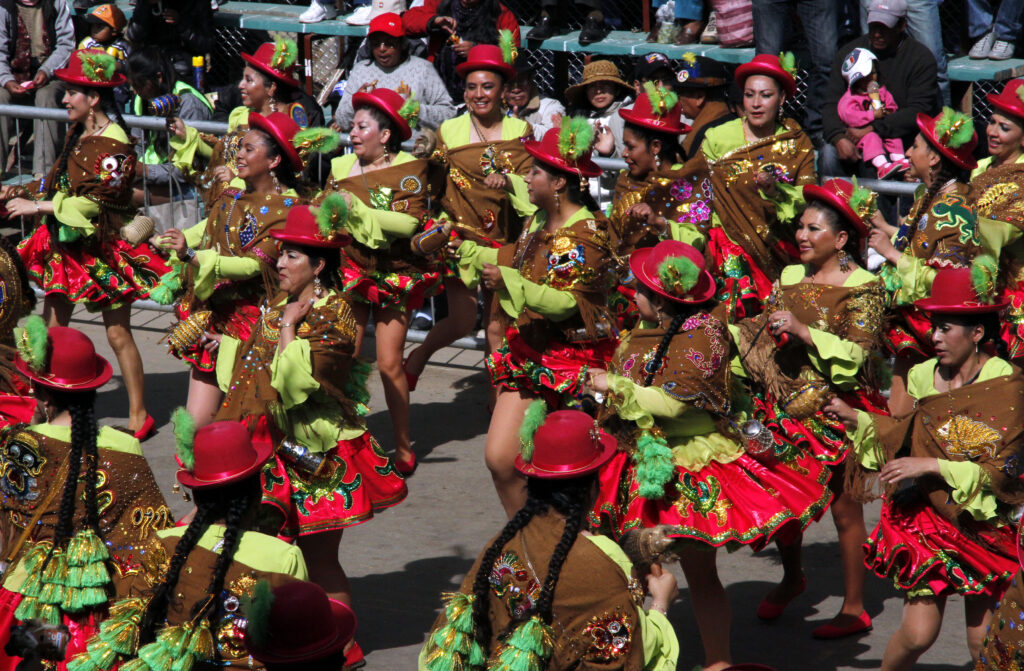
Legend also has it that in 1789, a mural of the Virgin Mary miraculously
appeared in a mineshaft of the richest silver mine in Oruro. Ever since the
Carnival has been observed in honour of the Virgen de la Candelaria (Virgin of the Candle Mass) or Virgen del Socavon (Virgin of the Mineshaft). The most important elements of the Carnival now occur in and around the Sanctuaria del Socavon (The Church of the Mineshaft).

The carnival starts with a ceremony dedicated to the Virgen del Socavon.
Marching bands compete simultaneously in the grotto of Pie de Gallo on
Sunday, which is the greeting to the Virgin. The highlight of the Carnival is
conducted over three days and nights, with fifty groups parading through the city over a route of four kilometres.’

Dr Fernando Cajias de la Vega, Professor of History and Deacon of
Humanities and Education Sciences at San Andres University in La Paz
feels that the festival is more of a ‘religious symbiosis…, a living experience than a union of two faiths’. Further, he says that ‘Carnival, from Latin, means to say goodbye to meet prior to Lent, so its date is the same in the whole Christian world: the three days before the start of the forty days of Lent. But here, the Christian carnival united with Andean festivals or ‘anatas’ of fertility and harvest. In the Andean farming cycle, harvest starts in February, and with the union with Christianity, the key date became the 2nd February, which is that of the Virgin of Candlemass. This was the first union.

But later, in Oruro in particular, the Virgin became associated with mining
production. The Virgin of Oruro is the Virgen del Socavón [Virgin of the
Cave]… the other major association is with Tio de la Mina [a subterranean
idol modelled on popular conceptions of the devil], who, for Aymaras and Quechuas, is the god of the mines. In Oruro now the Virgin of Socavon is much more prominent than Tio de la Mina. A large majority believe that by dancing for the Virgen del Socavón they can obtain many more of their heart’s desires. Which is the Andean idea of reciprocity: I dance for you, you help me. I invest in you, you help me. The most important dance in Oruro is the Diablada. The Diablada represents the Archangel Michael in the battle against the cardinal sins. But in the Andean vision, the devil is also Supay, the god of the underworld who, since it is carnival-time and everyone is distracted, comes up here and takes on a human appearance in order to dance.’

Although not many people around the world are aware of the Oruro festival the sheer scale and colours of the carnival are such that it is destined to become a global phenomenon in the future, attracting thousands of foreign visitors to Bolivia. There may be several reasons why this amazing festival is not very well known, unlike the world-famous Rio Carnival in Brazil.
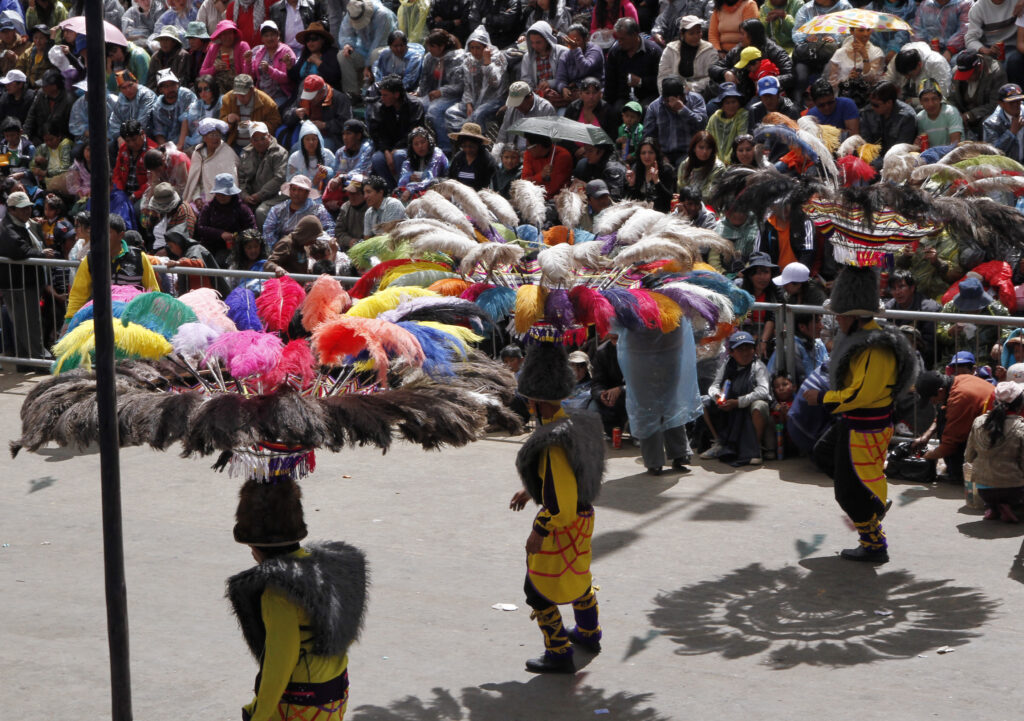
Bolivia is relatively less prosperous as compared to other countries in South America and the authorities there have not been able or willing to promote the festival internationally. The high altitude of the capital city La Paz and the city of Oruro, which are both situated at more than 3,500 meters above sea level means, means that many visitors to the country experience a variety of sickness due to the thin air. It takes a few days or even weeks for newcomers to become acclimatised when staying at such a high altitude environment. In my case I found that I was out of breath, feeling dizzy and a little sick when I first got there. I could only walk very very slowly for the first few days. My physical abilities for walking, carrying things, etc. only increased gradually.
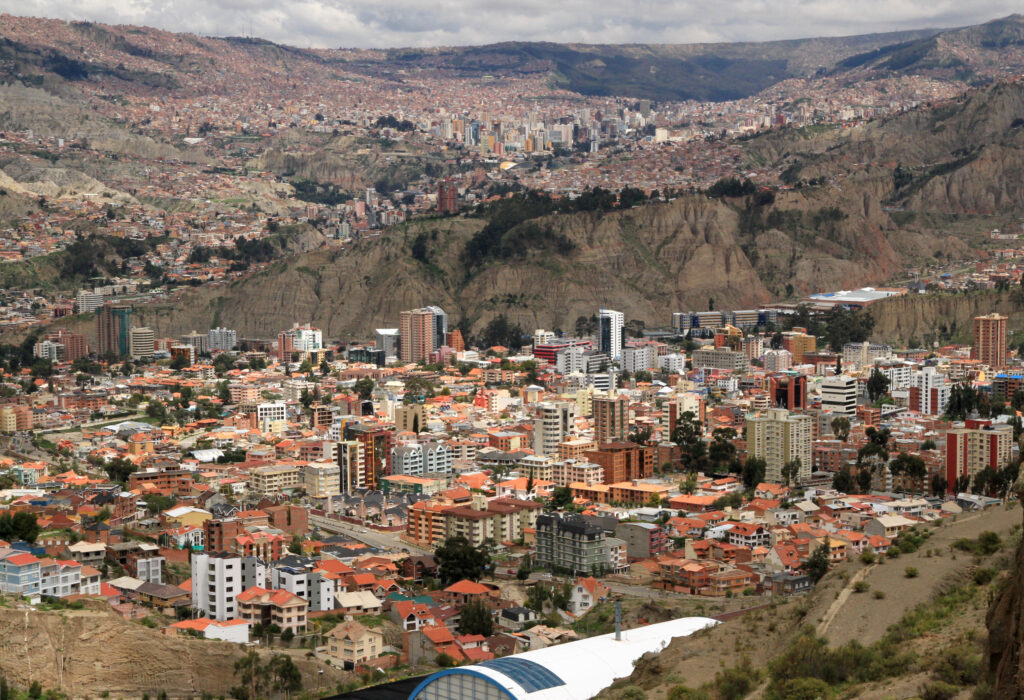
I was scared to go there in the first place when I read on the internet about the potential problems that one can experience from altitude sickness, which, in some cases, can cause the loss of consciousness and even death. However, I was reassured by Emma Donlan, an English Lady living in Bolivia who made arrangements for my stay in La Paz. She also helped with booking various tours for me including a 3 am night travel to experience the Oruro Carnival. Before I departed from London, she informed me that her father was more than 70 years old, who recently visited La Paz from the UK, and had no problems with the thin air in Bolivia’s highlands. I found that information quite reassuring.
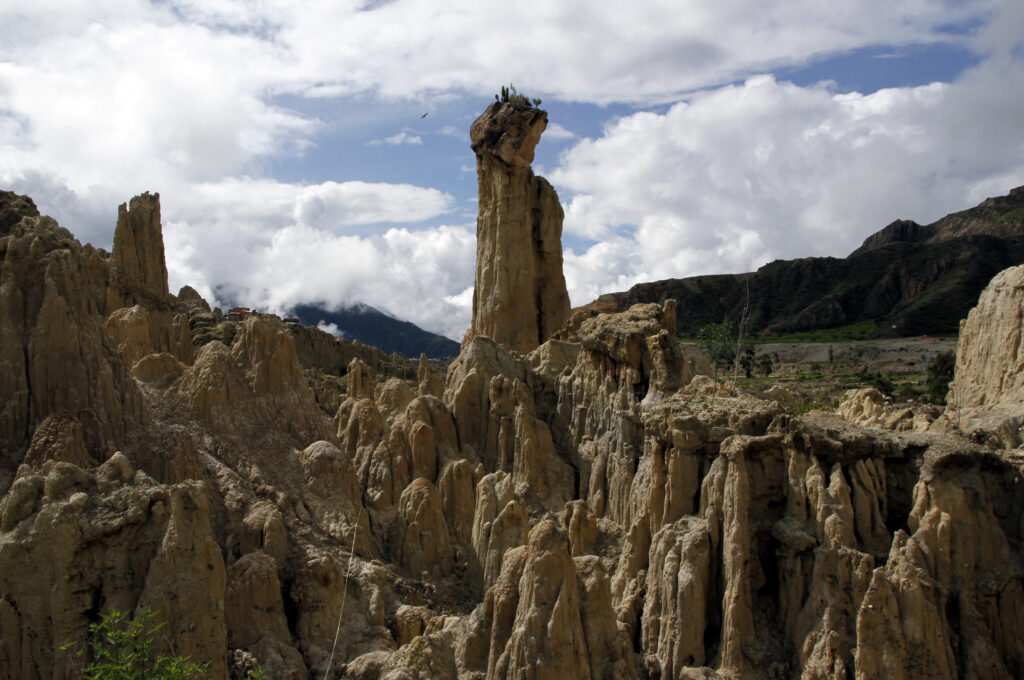
I tried reading as much as possible about the Oruro Carnival and Bolivian
history before going there so that I would have a better understanding and have more appreciation of what I see and experience. When I got to La Paz on 10 February I spoke to many people and took several city tours before going to the carnival in Oruro on 18 February. By the date of the Carnival, I developed a reasonable understanding of what it was and what people in Bolivia feel about the festival, especially in the capital city, where I stayed.
On landing at El Alto Airport at about 2 pm on 10 February I was extremely nervous about leaving the aircraft as I was not sure whether my lung and brain could cope with the low oxygen level, particularly as the airport was situated at even a higher altitude than the city of La Paz. As I had no choice but to disembark from the aircraft I took my camera and laptop bags on my shoulders and walked out extremely slowly and immediately started to feel very week and began to experience breathing difficulties. My heart also started to pulsate faster. I thought on several occasions what if altitude sickness was to affect me badly and something terrible were to happen. I learned from the internet that air stewardesses and staff at the airport are trained to deal with foreigners who experience altitude sickness on arrival and they have emergency oxygen supplies. At least that gave me some peace of mind that I would get the right kind of help if needed. But I was also worried that my whole plan to go to Oruro to see the festival and cook Bangladeshi food for Aymara indigenous people may be ruined if I were to experience any adverse reactions caused by the low oxygen level in La Paz and Oruro. Although my worries were based on real possibilities the actual impact was rather low. As I walked out of the airport and got into the taxi that was waiting for me I started to feel more confident that I will be ok.
The landscape from the airport to Emma’s house looked very strange. I had never experienced such strange mountainous regions. True, it looked quite strange but it was also very beautiful. Within very short distances the mountainous landscape sometimes changed completely and dramatically, which added to my interest in Bolivia further.
I stayed in one of the volunteers’ houses within the complex where Emma
lives with husband Rolando and two young kids. The complex is situated on the edge of a hill on one side of a deep river valley. The view one gets from that position is quite awesome. During my stay, I met several other volunteers, mostly young people from the UK and one lady from Holland. It was a very fun place to be with lots of singing, eating together and playing enjoyable games, especially during the evening.
I was also invited by the Mayor of Mallasa Town Council to deliver a presentation on my experience of social and economic regeneration programmes in London. From the second day of my arrival, I started to go into the city centre to explore, and I found the place to be very different from anything I had experienced before. I had never been to South America before cannot speak Spanish so most things were new for me and my communication and interactivity with the people were quite limited.
For the first time in my life, I saw face to face native peoples of the Americas and I felt very good as I thought most of them had been killed. I knew Bolivia had a native majority but never really expected to see so many in the capital city. If it were not for the Spanish language and many native ladies wearing old Spanish style dress I could have easily mistaken myself thinking that I was in Thailand, Malaysia, etc. as many young people looked exactly like people from South East Asia.
From the third day onwards I started to go on guided tours and the three tour guides that showed me around were fantastic and I learned much from them. It was clear from the beginning that I was in La Paz during a very important festive season. There were lots of things happening and in the centre of the city, which had many stages set up for entertainment. Banners and posters informed people about the upcoming carnival in La Paz and many shops had posters of the Oruro festivals offering competitive rates for tours to the carnival. There were children and young people engaged in foam and water fights.
I had to get up at 3 am on 18 February and take a taxi to go to a rendezvous point for the pick to travel to the city of Oruro. The microbus that drove us for several hours was not very comfortable but the excitement of going to Oruro compensated for the discomfort experienced during the journey. The transport vehicle got there at around 8 am and we were all provided with breakfast and then taken to our designated seats. The carnival experience was amazing – continuous dancing and band playing music marching nonstop one group after another for 20 hours. As the day progressed the crowd became larger and larger and the setting area became more and more squeezed. Our group stayed until about 8 pm, and during the 12 hours at the Carnival, I took approximately 2,000 photographs and 3 hours of video footage. The festival went on until 2 am but as by 8 pm things started to become a bit disorganised with many unruly people, due to, perhaps, an increase in the consumption of locally brewed alcohol, especially by the young, we decided to depart early.
All the costumes worn by the dances are produced completely new every
year and they are entirely handmade. Some of the costumes are said to be up to $1000 per piece and communities save hard to ensure they can pay for their participation in the Carnival. In 2012 about 30,000 dancers took part in the festival, of which, more than 50% were women. However, before the 1950s all the dancers used to be men.
On the next day, 19 February 2012, I went to the city centre in La Paz to see the Anata Carnival, which was a very wet and highly charged fun event.